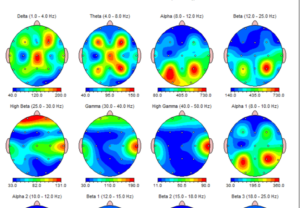Unveiling the Connection Among qEEG and Slumber Disorder Patterns for Improved Diagnosis and Treatment
Unveiling the Connection Among qEEG and Slumber Disorder Patterns for Improved Diagnosis and Treatment
Blog Article
Sleep hypopnea is a prevalent slumber condition that affects many individuals throughout the world. It occurs when a individual's respiration is interrupted during sleep, resulting to subpar sleep quality and multiple health concerns. One of the methods scientists and doctors are working to improve comprehend and diagnose sleep apnea is through a technique called quantified EEG, or qEEG. This approach assesses the electrical function of the cerebrum and can provide important understandings into how sleep apnea impacts brain function and overall health.
qEEG involves placing small sensors on the scalp to capture brain oscillations. These cerebral oscillations are then examined to identify patterns that may indicate sleep conditions, including sleep apnea. By analyzing these trends, healthcare professionals can obtain a clearer picture of how sleep apnea disrupts typical cerebral function during slumber. This information can be crucial for developing efficient therapeutic strategies customized to specific clients. Understanding the connection between qEEG and sleep apnea can lead to improved identification techniques and superior results for those impacted by this condition.
Research has shown that individuals with sleep apnea often exhibit specific alterations in their brain wave patterns. For example, during episodes of apnea, the brain may exhibit heightened function in specific regions while additional areas become less active. These changes can affect how well a individual slumbers and how refreshed they perceive upon waking. By using qEEG to monitor these brain wave patterns, doctors can identify particular traits of sleep apnea in clients, which can assist in making a more accurate identification. This is particularly crucial because sleep apnea can occasionally be mistaken for other sleep disorders, leading to inappropriate treatments.
In addition to enhancing diagnosis, qEEG can also serve a part in assessing the efficacy of therapies for sleep apnea. For visit the website instance, after a patient begins using a continuous positive airway force (CPAP) machine, which assists maintain the passage open during sleep, qEEG can be used to assess alterations in brain activity. If the cerebrum shows improved trends of slumber after initiating treatment, it may suggest that the treatment is functioning effectively. This feedback can help doctors make necessary adjustments to therapeutic strategies, ensuring that patients receive the best care feasible.
In summary, the relationship between qEEG and sleep apnea patterns is an exciting area of research that holds promise for enhancing diagnosis and therapy. By comprehending how sleep apnea impacts cerebral activity, medical professionals can formulate more effective strategies to help patients attain improved slumber and enhance their general well-being. As research continues to evolve, it is likely that qEEG will become an integral instrument in the fight against sleep apnea, leading to better results for those who experience from this difficult disorder.